
FATIGUE & FRACTURE OF ENGINEERING MATERIALS & STRUCTURES
Scope & Guideline
Exploring the Limits of Material Endurance
Introduction
Aims and Scopes
- Fatigue Behavior Analysis:
The journal extensively covers the study of fatigue behavior in various materials, including metals, polymers, ceramics, and composites, under different loading conditions and environmental factors. - Fracture Mechanics:
Research related to fracture mechanics, including crack initiation and propagation, is a core focus. This encompasses both theoretical modeling and experimental studies to understand failure mechanisms. - Material Characterization:
The journal emphasizes the importance of material characterization techniques to assess mechanical properties, microstructural features, and their influence on fatigue and fracture behavior. - Advanced Manufacturing Techniques:
There is a strong interest in the effects of advanced manufacturing processes, such as additive manufacturing, on the fatigue and fracture properties of materials. - Multiaxial Loading Conditions:
Studies involving multiaxial loading conditions and their impact on fatigue and fracture are frequently published, highlighting the complexity of real-world applications. - Machine Learning Applications:
The journal explores the integration of machine learning and data-driven approaches in predicting fatigue life and understanding fracture mechanisms, showcasing novel methodologies. - Environmental Effects on Fatigue:
Research investigating the influence of environmental factors, such as corrosion and temperature, on fatigue life and fracture behavior is a significant aspect of the journal's scope.
Trending and Emerging
- Additive Manufacturing and Fatigue:
A significant rise in studies examining the fatigue properties of additively manufactured components, highlighting the unique challenges posed by layer-wise construction and residual stresses. - Machine Learning and AI in Fatigue Prediction:
An increasing number of publications are exploring the application of machine learning and artificial intelligence for predicting fatigue life and analyzing fracture data. - Environmentally-Induced Fatigue:
Research focused on the effects of environmental factors, such as corrosion and temperature fluctuations, on fatigue performance has gained prominence, reflecting industry needs. - Multiscale Modeling Approaches:
There is a growing trend toward utilizing multiscale modeling techniques that bridge microstructural behaviors with macroscopic material properties to better predict fatigue and fracture. - Sustainability and Recycling in Materials:
Emerging interest in the fatigue behavior of recycled and sustainable materials as industries aim to reduce waste and improve material lifecycle management. - Advanced Characterization Techniques:
The use of advanced characterization methods, such as digital image correlation and synchrotron radiation, to study fatigue and fracture mechanisms is increasingly prevalent.
Declining or Waning
- Traditional Material Testing Methods:
There appears to be a waning interest in conventional fatigue testing methods, as researchers increasingly adopt advanced computational modeling and machine learning techniques. - Static Fracture Mechanics:
Research focused solely on static fracture mechanics, without consideration of dynamic or fatigue aspects, has seen a decline, as the field moves towards more integrated approaches. - Low-Cycle Fatigue Studies:
The frequency of studies solely addressing low-cycle fatigue mechanisms has decreased, with more emphasis being placed on high-cycle and very-high-cycle fatigue behavior. - Homogeneous Material Studies:
Research that exclusively examines homogeneous materials, without considering the complexities of composite or heterogeneous materials, has become less prominent.
Similar Journals

Frattura ed Integrita Strutturale-Fracture and Structural Integrity
Exploring the Frontiers of Structural EngineeringFrattura ed Integrita Strutturale - Fracture and Structural Integrity is a prominent open-access journal published by GRUPPO ITALIANO FRATTURA since 2007, dedicated to advancing the fields of Civil and Structural Engineering, Mechanical Engineering, and Mechanics of Materials. With an E-ISSN of 1971-8993, this journal has established itself as a significant platform for researchers and practitioners in the engineering community, offering an accessible outlet for high-quality research and innovative methodologies. The journal has achieved impressive standings in the Scopus ranks, notably being positioned in the second quartile (Q2) across its relevant categories in 2023, indicating its growing influence and the quality of the research it disseminates. With a publishing scope extending from 2011 to 2024, Frattura ed Integrita Strutturale continues to be an invaluable resource for addressing the mechanics of material integrity and fracture phenomena, inviting contributions that advance understanding and foster multidisciplinary dialogue. By prioritizing open access, the journal ensures that vital research is readily available to a global audience, enhancing collaboration and knowledge sharing among academia and industry alike.
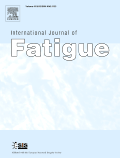
International Journal of Fatigue
Pioneering insights for structural integrity.International Journal of Fatigue is a leading peer-reviewed journal published by ELSEVIER SCI LTD, with an esteemed reputation in the fields of Industrial and Manufacturing Engineering, Mechanical Engineering, and Materials Science, as reflected in its prestigious Q1 quartile rankings. Founded in 1979, this journal has become a crucial platform for the dissemination of cutting-edge research focusing on the fatigue behavior of materials, structural integrity, and the modeling of fatigue processes. The journal enjoys significant visibility and recognition in the academic community, with impressive Scopus rankings placing it in the top percentiles across multiple engineering categories. Researchers and practitioners benefit from its rigorous peer-review process, aiming to advance understanding and application of fatigue concepts across various industrial applications. The journal does not currently offer Open Access options, but it provides a vital repository of knowledge for professionals and scholars seeking to deepen their expertise in this critical area of study.
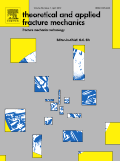
THEORETICAL AND APPLIED FRACTURE MECHANICS
Bridging disciplines through innovative fracture research.THEORETICAL AND APPLIED FRACTURE MECHANICS, published by Elsevier, is a leading journal dedicated to advancing the field of fracture mechanics through rigorous theoretical and experimental research. With an impressive impact, the journal holds a Q1 categorization across multiple disciplines, including Applied Mathematics, Condensed Matter Physics, Materials Science (miscellaneous), and Mechanical Engineering, highlighting its importance in bridging various domains of science and engineering. The journal's ranking within the Scopus database, including 96th percentile in Applied Mathematics and 88th percentile in Mechanical Engineering, underscores its vital contribution to scholarly dialogue and knowledge dissemination. Although it currently does not offer open access, THEORETICAL AND APPLIED FRACTURE MECHANICS maintains a commitment to high-quality publication, aiming to foster interdisciplinary collaboration and innovation in the study of fracture mechanics from 1984 to 2024 and beyond. Researchers, professionals, and students engaged in examining the mechanics of materials will find valuable insights and cutting-edge studies within its pages.
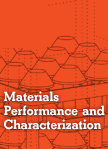
Materials Performance and Characterization
Bridging Theory and Practice in Materials ResearchMaterials Performance and Characterization is a distinguished journal published by the American Society for Testing and Materials (ASTM), specializing in the field of materials science. With ISSN 2379-1365 and E-ISSN 2165-3992, this journal serves as a pivotal platform for disseminating innovative research in the areas of metals and alloys, polymers and plastics, ceramics and composites, and mechanics of materials. Established in 2012, it continues to feature peer-reviewed articles that contribute to both theoretical advancements and practical applications, emphasizing the importance of materials performance in various industries. Despite its current Q4 and Q3 rankings across categories as of 2023, the journal is committed to enhancing its influence in the materials science community, fostering engagement among researchers, professionals, and students alike. The journal is essential for anyone seeking to stay at the forefront of materials research and characterization.

INORGANIC MATERIALS
Shaping the Future of Inorganic Materials ScienceINORGANIC MATERIALS, published by MAIK NAUKA/INTERPERIODICA/SPRINGER, is a pivotal journal in the realm of Materials Science, focusing primarily on the exploration and application of inorganic materials. With a robust commitment to advancing knowledge in areas such as Metals and Alloys, Inorganic Chemistry, and Chemical Engineering, this journal has successfully maintained a reputation for quality, achieving various category quartiles in 2023, including Q3 in Chemical Engineering and Materials Chemistry, and Q4 in Inorganic Chemistry. Although it operates under traditional access models, the journal welcomes contributions from researchers dedicated to understanding the properties and applications of inorganic substances. Throughout its publication history from 1996 to 2024, INORGANIC MATERIALS has become an essential resource for those engaged in innovative research and development, making it an invaluable tool for students, professionals, and academics alike.
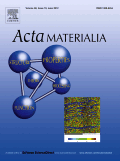
ACTA MATERIALIA
Unveiling Innovations in Material EngineeringACTA MATERIALIA is a premier journal in the field of materials science, published by PERGAMON-ELSEVIER SCIENCE LTD. With an ISSN of 1359-6454 and an E-ISSN of 1873-2453, this esteemed journal serves as a vital platform for disseminating high-quality research across various critical domains, including ceramics and composites, electronic, optical and magnetic materials, metals and alloys, and polymers and plastics. Recognized for its impact in the field, ACTA MATERIALIA boasts a remarkable standing, featuring a Q1 ranking in multiple categories as of 2023, solidifying its importance among the top journals in materials science. Researchers and professionals benefit from open access options, ensuring that groundbreaking findings are available to a global audience. Operating out of the United Kingdom, ACTA MATERIALIA strives to advance knowledge and innovation within the materials science community, making it an invaluable resource for academics, industrial professionals, and students dedicated to the future of material engineering and technology.
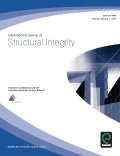
International Journal of Structural Integrity
Advancing the Frontiers of Structural EngineeringInternational Journal of Structural Integrity is a premier peer-reviewed academic journal published by EMERALD GROUP PUBLISHING LTD in the United Kingdom. As a valuable resource in the fields of Civil and Structural Engineering, Mechanical Engineering, and Mechanics of Materials, this journal serves to advance knowledge and foster innovation in these critical areas of study. With an impressive impact factor reflected in its 2023 category quartiles, ranking Q2 across multiple engineering disciplines, the journal is recognized for its contributions to research and practical application. Researchers can benefit from its rigorous publishing standards that encompass a wide array of interdisciplinary topics pertaining to structural integrity. Accessing the journal is facilitated for those seeking high-quality research and findings, vital to both academia and industry. Since its inception in 2010 and extending until 2024, the journal continues to attract scholarly articles that push the boundaries of engineering knowledge, making it an essential platform for professionals, students, and researchers seeking to stay at the forefront of structural engineering."

EXPERIMENTAL MECHANICS
Pioneering Research in Mechanics of Materials.EXPERIMENTAL MECHANICS, published by SPRINGER, stands at the forefront of research in the fields of Aerospace Engineering, Mechanical Engineering, and Mechanics of Materials. Established in 1961, this esteemed journal has made significant contributions to the understanding and advancement of experimental methodologies and techniques essential for both academic research and practical applications in engineering. With an impressive impact factor and recognition as a Q2 journal in its category for 2023, it ranks 40th in Aerospace Engineering and has established itself as a valuable resource for researchers and practitioners alike. Although it is not an Open Access journal, it provides robust access options, ensuring that high-quality research remains accessible to a broad audience. The journal aims to disseminate innovative findings, foster collaboration, and inspire the next generation of engineers and scientists by focusing on the challenges and developments within experimental mechanics. The editorial board comprises leading experts in their respective fields, further emphasizing the journal’s commitment to excellence and relevance in an ever-evolving technological landscape.
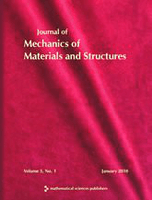
Journal of Mechanics of Materials and Structures
Fostering Academic Excellence in Material Behavior Research.Journal of Mechanics of Materials and Structures, published by Mathematical Science Publishers, is a distinguished periodical in the field of Applied Mathematics and Mechanics of Materials. With the ISSN 1559-3959, this journal has been a pivotal platform since its inception in 2006, providing insights and advancements in the mechanics of materials and their structural applications. Operating out of the University of California, Berkeley, this journal not only boasts a respectable standing within its categories, ranking Q4 in Applied Mathematics and Q3 in Mechanics of Materials as of 2023, but it also serves a crucial role in fostering academic discourse among researchers, practitioners, and students alike. Although it does not currently offer open access, its contributions to the respective fields are invaluable, underscoring the relevance and importance of continued research in understanding material behavior and structural integrity. Whether investigating theoretical frameworks or engineering applications, the Journal of Mechanics of Materials and Structures remains an essential resource for anyone dedicated to the advancement of the science of materials and structures.

INTERNATIONAL JOURNAL OF FRACTURE
Connecting Researchers through Cutting-edge Fracture InsightsInternational Journal of Fracture, published by Springer, stands as a leading peer-reviewed platform dedicated to advancing the field of fracture mechanics and its applications. Since its inception in 1973, this journal has provided a crucial forum for innovative research and discussions, addressing pivotal topics in computational mechanics, mechanics of materials, and modeling and simulation. With a significant impact factor and a Q1 classification in computational mechanics, it ranks impressively within the Scopus metrics, further solidifying its relevance among global researchers and professionals. The journal caters to an international audience by fostering the exchange of knowledge and cutting-edge discoveries, making it an essential resource for those engaged in the latest advancements and applications in material fracture studies. Its commitment to high-quality research ensures that the findings published within its pages not only contribute to academic discourse but also influence real-world engineering and manufacturing practices.